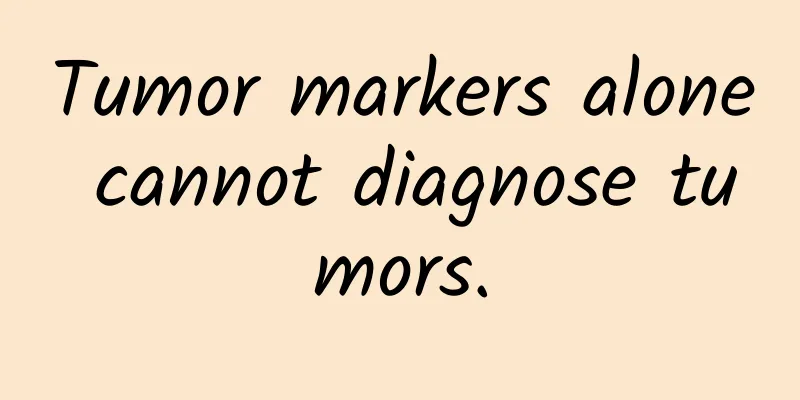[Popular Science on Medication] Are you taking the right medicines?
![[Popular Science on Medication] Are you taking the right medicines?](/upload/images/67f19f96807f2.webp)
|
In many cases, different methods and times of taking medicines have different effects on the body. In order to better exert the efficacy of the medicine, it is often necessary to follow the doctor's orders and take the medicine correctly to help restore health. However, many patients will encounter these problems. They have many kinds of medicines, but they don't know how to take them correctly? Especially the reaction between drugs, if you are not careful, it will increase the severity of the disease. For this reason, it is particularly important to choose the right method of taking the medicine. Based on this, this popular science article explains the knowledge related to taking medicines correctly, and I hope it will be helpful to everyone. 1. How to take different types of medicines correctly? Common medicines in daily life include capsule-type medicines, granule-type medicines, tablet-type medicines, and oral solutions, etc. Different methods of using different types of medicines will also affect the efficacy of the medicines to a certain extent. To this end, the following explains the correct methods of taking different types of medicines: 1. Capsule-type drugs Capsule-type drugs can be absorbed through the gastrointestinal tract and excreted through the liver and kidneys. They are usually wrapped in round or oval tablets or spheres, and the outer capsule shell has a certain effect of sustained and controlled release of drug efficacy. When taking capsule-type drugs, because the capsule will be dissolved in the mouth, when taking the capsule, you can put the tablet under the tongue to melt slowly, do not swallow it directly to avoid the drug reaching the stomach directly; at the same time, after taking the medicine, there will be a burning sensation in the stomach, which is because the drug in the capsule is not crushed, causing gastrointestinal discomfort. Therefore, when taking capsule-type drugs, you can take it with water. Do not dissolve the capsule directly with water to avoid affecting the efficacy of the drug. Do not take out the crushed drug directly and take it, which is easy to cause gastrointestinal mucosal damage. Figure 1 Capsule-type medicine (picture from the Internet) 2. Granular drugs Granular drugs need to be dissolved in an appropriate amount of water before they can be taken. Moreover, most Western medicines are solid preparations made from chemical synthesis or natural extracts. They contain relatively more chemical substances, which will accumulate in the human body and produce side effects. Therefore, they cannot be taken for a long time. For example, long-term use of cephalosporin antibiotics will produce some drug resistance, which requires switching to other types of antibiotics to solve the problem. Figure 2 Granular drugs (picture from the Internet) 3. Tablets Tablets are mostly compressed from one or several drugs. When choosing a method of taking them, you can swallow them or break them apart and chew them. During swallowing, you need to pay attention to some hard and particularly large tablets. They cannot be taken by swallowing, as they can easily scratch the esophagus or cause gastric mucosa. At this time, they need to be taken with warm water. This is because the trace elements contained in warm water can reduce the irritation of the drug itself and help the body absorb the drug better. In addition, drugs with certain dosage requirements need to be broken apart or chewed. When breaking the drugs apart, pay attention to the strength to avoid damaging the tablets, exposing the drugs to the air and losing their protective effects, which reduces the efficacy of the drugs. Figure 3 Tablet drugs (picture from the Internet) 4. Oral solution Oral solutions are more suitable for infants and elderly patients. The liquid dosage is relatively easy to master and adjust, the drug has a large dispersion, is absorbed quickly and completely, and takes effect quickly. However, liquid dosage forms are prone to mold and are inconvenient to carry. When taking the liquid, you need to pay attention to whether there is mold to avoid causing discomfort to the body. Figure 4 Oral solution picture (picture from the Internet) 2. How to understand the contraindications of taking drugs? In the process of taking medicine, in addition to the method of taking medicine explained by the doctor, you also need to understand the contraindications of taking medicine to avoid adverse reactions with other medicines during the process of taking medicine, which will cause damage to your health. Therefore, when taking medicine, you can understand the ingredients of the medicine through the drug instructions. For example, when taking multiple medicines at the same time, you need to check whether the ingredients between the medicines overlap. If there is overlap, you need to use it according to the doctor's advice. At the same time, you also need to check the indications of the medicine, especially when you choose the medicine yourself, you must prescribe the right medicine to determine whether your symptoms should take this medicine to avoid taking the wrong medicine and causing damage to your body. In addition, you also need to check the contraindications and adverse reactions on the drug instructions. Among them, prohibition means that it will definitely bring adverse consequences after taking it, prohibition of use means that it is likely to bring adverse consequences after taking it, and taboo and cautious use mean that it can be taken when necessary, but in the process of taking medicine, you need to observe at any time. From the perspective of its danger, prohibition>contraindication>cautious use, therefore, before taking multiple drugs, you must carefully read the drug instructions. Finally, you also need to understand the storage methods of special medicines. Medicines like insulin have certain requirements for the storage environment. They need to be placed in an environment of 2-8 degrees Celsius and the storage temperature in a cool place needs to be controlled within 20 degrees so that the medicine can be taken correctly while maintaining its efficacy. 3. How to choose the correct posture for taking medicine? In general, people don't pay much attention to the posture of taking medicine, thinking that as long as they swallow the medicine, it will be fine. However, the wrong posture of taking medicine often reduces the efficacy of the medicine. Most patients usually choose to take medicine while standing or sitting. This is because this posture allows the medicine to quickly pass through the esophagus to the gastrointestinal tract, avoiding the drug adhering to the esophagus and irritating the esophageal mucosa. Otherwise, the time for the drug to pass through the esophagus will be prolonged, which will not only irritate the mucosa and cause gastrointestinal ulcers, but also delay the absorption of the drug and reduce the efficacy of the drug. When taking some special medicines, you need to choose to sit or lie down to take them. For example, when taking nitroglycerin sublingually, or taking antihypertensive drugs such as prazosin and terazosin, you cannot stand to take them. You need to choose to lie down or sit to take the medicine. And drugs such as alendronate sodium that are irritating to the gastrointestinal mucosa are best taken while standing. After taking the medicine, you need to keep your upper body upright for at least 30 minutes, and you cannot lie down to avoid irritating the intestinal mucosa. By choosing the correct posture for taking medicine, you can better exert the efficacy of the medicine and help restore health. Figure 5: Medication posture diagram (picture from the Internet) 4. How to choose the correct time to take medicine? The time of taking medicine is often determined by the different types of medicines. For example, there are no special requirements for the time of taking ordinary medicines. Whether it is before or after meals, it will not have much impact on the human body. However, some special medicines will limit the time of taking medicines. When buying medicines, doctors will mostly explain the correct time of taking medicines. This ensures that the drug effect is maximized within the specified time. Most of the drugs such as prokinetic drugs, gastric mucosal protective agents, and drugs that inhibit gastric acid secretion are taken within 15 minutes to 1 hour before meals; while digestive drugs, choleretic drugs, and vitamin drugs are mostly taken with meals; and antibiotics such as roxithromycin are mostly taken 30 minutes after meals; anthelmintics, saline laxatives and other drugs are taken on an empty stomach 1-2 hours before meals or 2 hours after meals; antihypertensive drugs, diuretics and other drugs are taken in the morning before or after breakfast. You can choose the appropriate time of taking medicine according to different types of drugs, so as to exert the best drug effect while reducing adverse reactions of drugs. Conclusion To sum up, the methods for different types of drugs are also different. The time of taking medicine, the method of taking medicine, the posture of taking medicine and the contraindications of the medicine are all issues that patients need to pay attention to during the medication process. Only by choosing the correct way of taking medicine can the efficacy of the medicine be maximized, the adverse reactions of the drug to the body can be reduced, and the patient can recover health as soon as possible and improve physical fitness. |
<<: Coffee contains the carcinogen acrylamide. Will drinking it cause cancer?
>>: What tests can diagnose bladder cancer early? How to prevent it?
Recommend
Why do women sweat a lot on the back of their heads?
Some female friends have experienced sweating on ...
An article to give you a comprehensive understanding of acne
Have you ever been troubled by acne and felt like...
How long does it usually take for nausea and vomiting to occur during pregnancy?
After pregnancy, each pregnant mother's physi...
What is the reason for sagging breasts? These are the culprits
One of the most troubling problems for women afte...
Is it fun to travel to Mohe in December? What to wear in Mohe in winter
Friends who have studied geography know that Mohe...
How long after spanking a child can you have sex?
Generally speaking, you should not have sex too s...
Chinese patent medicine for estrogen supplementation
Insufficient estrogen can cause their ovaries to ...
Sleep and health
Sleeping takes up 30-50% of a person's life. ...
A picture of a mole on a woman's left waist
What does a mole on a woman’s left waist mean? In...
When is the right time to add soy sauce to steamed fish? Should the soy sauce be added after the fish is cooked or during steaming?
We all know that steamed fish soy sauce is a comm...
How much staple food do girls eat in a day
Main meal is an indispensable food in daily diet....
【Health Lecture】A brief discussion on osteoporosis
1. Osteoporosis mainly refers to the decrease in ...
Your butt may have lost its memory because of what you often do.
Many adults sit for more than 8 hours a day, sitt...
Can I eat apples during my period?
Menstrual period is something that every girl exp...









